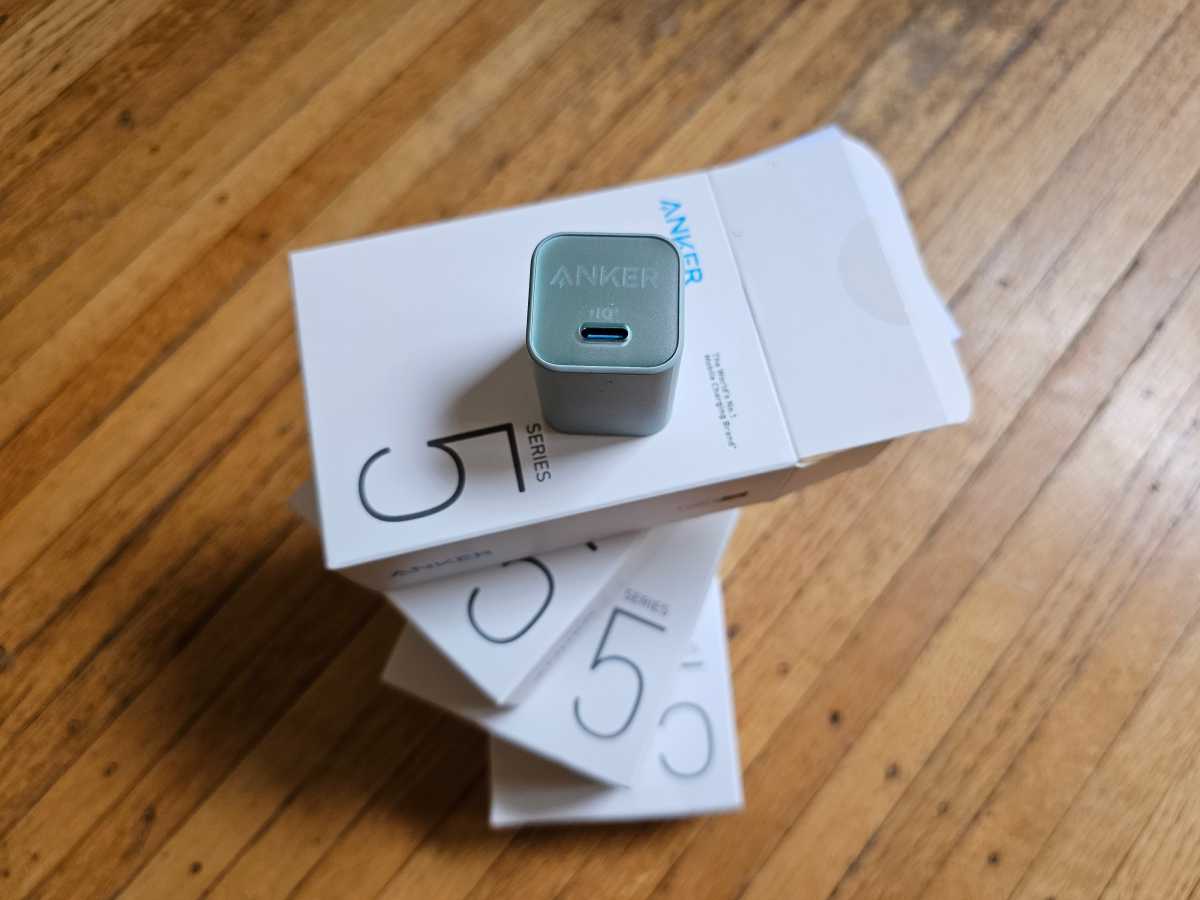I need another USB-C charger like I need a hole in my head. And as it turns out, I apparently needed another seven holes in my head.
Yes, no lie, in the last two weeks I spent my own cash on seven new GaN USB-C chargers. This is from a nerd who literally has an overflowing box of USB-C chargers.
What kicked off my decision to buy chargers I didn’t think I needed, but wanted, was the desire to trim as much weight off as possible. This happened during a 15-day vacation in Japan where my family and I walked multiple 12+ mile days and the weight of a 65-watt dual-port charger and a 10,000mAh battery pack began feeling felt like a lead weight. Like a competitive cyclist, I wanted to shave as much weight from my load as possible—even if it was a few grams.
Luckily Japan never abandoned retail electronics. Visiting no less than 10 different stores, I was able to physically touch dozens of USB-C GaN chargers and read the specs on the chargers themselves.
I came away from Japan with what seemed like the best fit for my needs: Elecom’s 45-watt, CW102 GaN II-based charger (here’s a cuter and pricier version of it on Amazon). It was a little chunkier than I had aimed for but with its 45-watts of power, I could run a small laptop and more importantly, the Elecom charger supports the optional USB-PD Programmable Power Supply or PPS standard. Despite having a large array of USB-C chargers, none of them supported PPS. While I have ignored that in the past, my GaN charger adventure taught me what I was missing.

Gordon Mah Ung
Why you want a charger with PPS
All USB-C chargers support USB-PD (power delivery) charging voltages in large steps of say, 3 volts, 5 volts, 9 volts, 15 volts, and 20 volts. PPS, however, allows for a much finer grain control of voltage and offers a continuous range, such as 3 volts to 16 volts in very small 20mV steps. While a standard USB-C charge rate can look like large steps, PPS can look like a curve and is constantly renegotiated every few seconds based on what the phone’s battery tells the charger it needs.
Besides offering a much smoother charging curve, a PPS charger can result in cooler charging inside the phone as the conversion inside is offloaded to the charger and better matched to its needs. This, in turn, can lead to faster charging as well as less stress on the battery during charging, which can result in a longer service life for a phone’s battery.
PPS sounds great, but it also requires the phone to support it too. Today, many Android-based phones and tablets support PPS, but it’s not universal as Apple hasn’t embraced the technology. My Samsung Galaxy S23 Ultra does support PPS, though, and the only way to trigger the phone’s Super Fast Charge mode is with a 45-watt USB-C charger that supports PPS. Google’s newer Pixel lineup as well phones from Asus and others also support PPS charging.
Not small enough, not light enough
With three Elecom chargers in my basket (I anticipated losing them as gifts, loss, and to permanent “borrowers”) I thought I had all the GaN chargers I’d need for the next few years. It was a pleasure to ditch the power bank and larger charger I had brought on the trip for the Elecom.
When I arrived back in the United States however, Amazon’s Prime Day was in full swing and one of the chargers I had eyed, but decided wasn’t a great deal in Japan popped up on my radar: Anker’s popular 511 Nano 3 charger for $16.99. Not to be confused with the original Anker 511 Nano Pro charger, the newer 511 Nano 3 charger increases the charge rate from 20 watts of the original Nano to 30 watts. More importantly, while the original Nano supported pretty basic USB-PD at 5 volts and 9 volts and no PPS, the 511 Nano 3 supports 5 volts, 9 volts, 15 volts, and 20 volts as well as two PPS profiles. The newer Nano 3 also features folding prongs which I prefer to prevent bent prongs when stowed.

Proof: I did indeed buy four of these Anker 511 Nano 3 GaN chargers.
Gordon Mah Ung
Its most important feature though is its weight. The 511 Nano 3 is extremely light, coming in at 39 grams on my scale, for a 38 percent reduction in weight versus the Elecom charger. Yes, it’s also a 33 percent reduction in wattage too, but I know in reality most phones don’t run at the maximum charge rate very long and the reduction won’t matter too much.
So as insane as it sounds, a week and a half after buying three GaN chargers on vacation, I came back and bought an additional four GaN chargers this Tuesday. Insane? Sure, I get that, but realizing just how tiny and powerful and far more advanced these newer GaN chargers are, I actually think it makes sense to upgrade my chargers as I’ve upgraded my phone.
Stay connected with us on social media platform for instant update click here to join our Twitter, & Facebook
We are now on Telegram. Click here to join our channel (@TechiUpdate) and stay updated with the latest Technology headlines.
For all the latest Technology News Click Here
For the latest news and updates, follow us on Google News.
